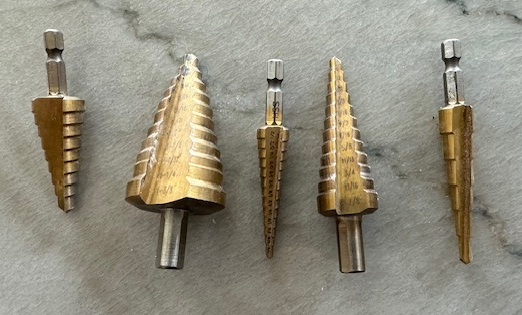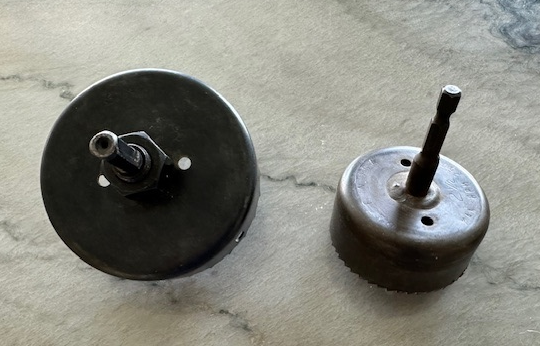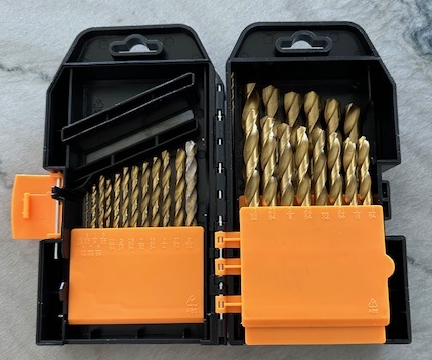Drill bits are cutting tools used to remove material to create holes, almost always of circular cross-section. They come in a variety of shapes and sizes to accommodate different materials and applications. Used with a drill, drill bits can bore holes into wood, metal, plastic, ceramic, and other materials. They are an essential component of any toolkit, particularly for DIY enthusiasts and professionals alike.
History of Drill Bits
The history of drill bits dates back to ancient civilizations where rudimentary drilling tools were used for various purposes. The Egyptians used simple drills powered by a bow to create holes in wood and stone. Over time, advancements in metallurgy and manufacturing processes led to more efficient and durable drill bits. The 19th century saw the invention of the twist drill, credited to Stephen A. Morse, which revolutionized the way holes were drilled by introducing a helical design that improved debris removal and cutting efficiency. This basic design has since evolved, incorporating new materials and coatings to enhance performance and longevity.
Types of Drill Bits
- Twist Bits: Most common, used for drilling wood, metal, and plastic.
- Brad Point Bits: Designed for woodworking, providing clean and precise holes.
- Auger Bits: Ideal for drilling large, deep holes in wood.
- Spade Bits: Flat bits used for rough boring in wood.
- Forstner Bits: Create clean, flat-bottomed holes, typically in woodworking.
- Hole Saw Bits: Used for cutting large diameter holes in wood, metal, and plastic.
- Masonry Bits: Designed for drilling into concrete, brick, and stone.
- Glass and Tile Bits: Specialized tips for drilling into glass and ceramic tiles.
- Step Bits: Conical bits used for drilling various hole sizes in sheet metal.
- Cobalt Bits: High-performance bits designed for drilling hard metals.


Key Features of Drill Bits
- Material: Common materials include high-speed steel (HSS), cobalt, and carbide.
- Coating: Coatings like titanium and black oxide enhance durability and reduce friction.
- Point Angle: The angle at the tip of the bit affects its cutting efficiency and is typically between 118 and 135 degrees.
- Flute Design: Flutes are the grooves that spiral around the drill bit, helping to remove debris and improve cutting action.
- Shank Type: The part of the bit that fits into the drill, which can be round, hex, or SDS.
Choosing the Right Drill Bits
Selecting the right drill bit depends on the material you are drilling and the type of hole you need. For woodworking, brad point or Forstner bits are ideal due to their precision. When working with metals, cobalt or titanium-coated twist bits offer the best performance. Masonry bits are essential for concrete and stone, while glass and tile bits are designed specifically for delicate materials. Always consider the size and depth of the hole, as well as the drill’s compatibility with the bit.
Drill Bit Recommendations
- DEWALT Drill Bit Set, 14-Piece
- NEIKO Step Drill Bit Set, 5-Piece
- Professional Masonry Drill Bit Set, 10-Piece
- KATA 6-Piece Hole Saw Kit
PRO TIP: If you have a bunch of miscellaneous drill bits, a good storage solution is a plastic pencil case. You can pick these up really cheap when they have the back to school sales towards the end of summer.
Proper Use and Techniques
To use drill bits effectively, ensure that the bit is securely fastened in the drill chuck. Start with a slow drilling speed to avoid overheating and damaging the bit. Apply steady pressure, allowing the bit to do the cutting without forcing it. For deeper holes, periodically withdraw the bit to clear out debris and reduce heat buildup. Using a lubricant, especially when drilling metal, can extend the life of the bit and improve cutting efficiency.
Maintenance and Care
Proper maintenance of drill bits can significantly extend their lifespan. After each use, clean the bits to remove debris and residue. Store them in a dry place to prevent rust and corrosion. Sharpening dull bits with a sharpening tool or a professional service can restore their cutting edge. Regularly inspect bits for signs of wear or damage, and replace any that are chipped or excessively worn.
Safety Tips
Safety is paramount when using drill bits. Always wear appropriate personal protective equipment (PPE), such as safety glasses and gloves. Secure the material you are drilling to prevent it from moving. Use the correct bit for the material to avoid breakage and potential injury. Keep hands and other body parts away from the rotating bit. Disconnect the drill from the power source before changing bits or making adjustments.
Conclusion
Drill bits are versatile tools essential for a wide range of drilling applications. Understanding the different types, features, and proper techniques can enhance your DIY projects’ efficiency and quality. By choosing the right drill bit, maintaining it properly, and following safety protocols, you can ensure successful and safe drilling experiences. Whether you’re a beginner or an experienced DIYer, having a comprehensive knowledge of drill bits will undoubtedly expand your capabilities and project outcomes.



